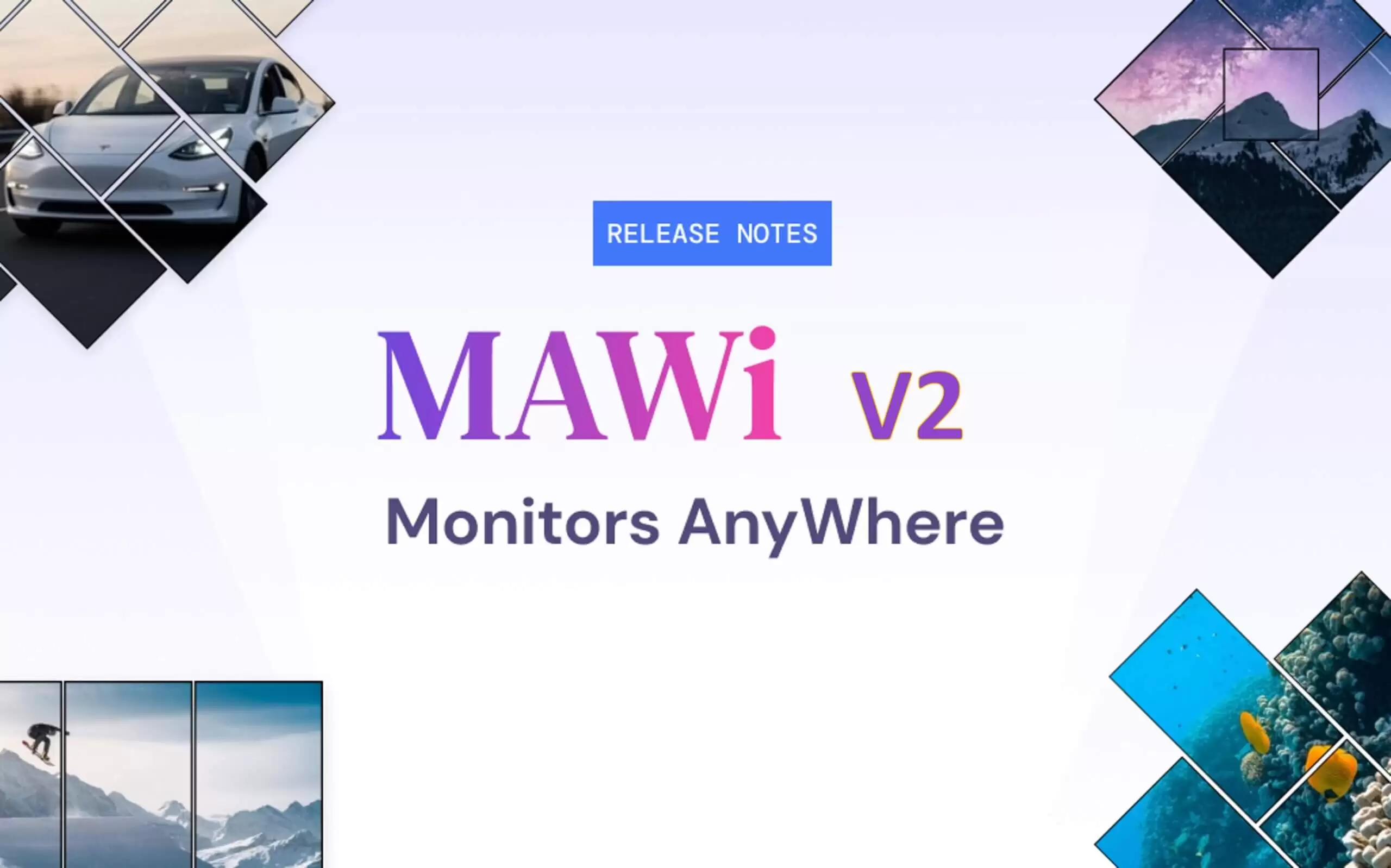Modern businesses rely on smooth digital performance. A Network Operations Center, or NOC, is the command hub that keeps everything online and running smoothly. For companies with large IT systems, a NOC is essential. It’s not just support; it’s key to keeping the business running.
What Exactly Is a Network Operations Center and What Does It Do?
A NOC is a central hub for IT teams. They keep an eye on network health, server status, and system performance. It’s like air traffic control for your business data—guiding and protecting everything in motion.
NOCs use dashboards, video walls, and real-time analytics. This helps them find problems before users are affected. Monitors AnyWhere’s MAWi lets companies manage several displays or video walls using just one PC. There’s no need for costly hardware.

Core Responsibilities of a NOC: More Than Just Monitoring
A modern NOC juggles many responsibilities:
For example, if a company’s internal communication network goes down during a major client meeting, the NOC can detect the fault, reroute traffic, and restore service in minutes—avoiding lost opportunities and reputational damage.
- Detect and respond to network incidents
- Optimize performance across systems
- Install updates and manage patches
- Monitor firewalls and security alerts
By leveraging tools like Monitors AnyWhere, NOCs streamline their display and content-sharing capabilities across control rooms and large-scale deployments.
The Tech Stack: Tools and Technologies Powering Modern NOCs
To keep systems running, NOCs rely on:
- Network monitoring tools (PRTG, SolarWinds)
- Service ticketing platforms
- Real-time dashboards and AV-over-IP video walls
- SIEM tools for security
MAWi enhances visibility across all connected screens, turning traditional monitoring into a dynamic, proactive system.
NOC Team Roles Explained: Who’s Who in the Control Room
Several key players keep the NOC running:
Tool Administrators manage and optimize the performance of all monitoring software and integrations to maintain operational flow.
- Engineers handle alerts and incidents
- Analysts review network trends
- Incident Managers coordinate responses
Solutions from Monitors AnyWhere empower these teams to share content quickly across multi-screen setups, making collaboration more effective.
How a NOC Responds to Network Incidents in Real Time
For instance, if a retail POS network fails, an NOC can reroute traffic and notify IT before sales are affected.
When problems arise, a NOC acts fast:
- Alerts trigger automatic system flags
- Engineers investigate and apply fixes remotely
- Updates are shared via digital signage or dashboards
Using AV-over-IP tools from Monitors AnyWhere, teams can broadcast vital updates across screens, reducing confusion and delay.
In-House vs. Outsourced NOCs: Which Setup Works Best?
Choosing between internal and outsourced setups depends on control, budget, and resource availability.
In-House:
- Direct control and integration with teams
- Tailored processes
Outsourced:
- 24/7 support
- Lower operational costs
For teams seeking flexibility without complexity, MAWi Link by Monitors AnyWhere is ideal. This cloud-based tool enables remote management of digital signage and video walls—no extra hardware is needed.
MAWi Link features:
- Cloud scheduling and screen control
- Ideal for distributed NOCs or lean IT teams
- Scales easily across locations
Explore MAWi Link for a flexible approach to your NOC setup.

Why a NOC Is a Strategic Asset—Not Just an IT Expense
A NOC is more than a cost center—it’s a performance enhancer. A strong NOC can:
- Improve response times
- Minimize downtime
- Inform smart decision-making
Enter the MAWi Player v2—a compact Android device that powers 4K displays, connects over wired or wireless networks, and syncs with the full MAWi ecosystem.
Highlights of MAWi Player v2:
- Designed for AV-over-IP
- Supports cloud or on-prem setups
- Easily integrates with MAWi software
Upgrade your NOC’s infrastructure with MAWi Player v2 for optimal performance.
Ensuring Business Continuity Through Effective NOC Implementation
A NOC is your digital safety net. Whether you’re a hospital sharing critical updates, a retailer promoting offers, or an enterprise managing data centers, having a reliable NOC matters.
With platforms like Monitors AnyWhere, organizations get streamlined, cost-effective digital signage and video wall control.
Ready to transform your NOC into a strategic powerhouse? Explore Monitors AnyWhere’s suite of solutions to elevate your network operations center’s capabilities.
Frequently Asked Questions
How does a NOC detect and resolve issues before users are affected?
NOCs use monitoring software and alerts to catch anomalies early. This helps engineers fix issues before they get worse. They also automate common responses to known problems, helping teams move quickly without missing a beat.
What’s the difference between a NOC and a SOC, and do companies need both?
NOC ensures performance and uptime. A SOC focuses on cybersecurity. Many businesses benefit from both to stay safe and stable. Together, they create a full-circle defense and support system for your IT infrastructure.
What industries benefit most from implementing NOC?
Healthcare, finance, education, retail, and telecom are just a few. Any organization that relies on steady digital operations needs one. These industries can’t afford downtime, so a NOC is often seen as a mission-critical investment.
How do NOCs handle scalability as businesses grow?
MAWi Link lets companies easily and affordably scale their display control. It works in more locations. As new departments, offices, or remote teams are added, scalable NOC tools help maintain consistent performance and oversight without the need for a complete infrastructure overhaul.
What certifications or standards should an NOC comply with?
Top standards include ISO 27001, ITIL, and NIST. These offer guidelines for data security, uptime, and compliance. Staying compliant not only improves operations—it also builds trust with clients and stakeholders.




